Thinking out loud.
New Yorkers have the Roeblings’ (father and son) Brooklyn Bridge. Britons have Fowler’s and Baker’s Forth Bridge. But San Franciscans have the best of all. Strauss’s Golden Gate.
I made a commitment last year to get around to taking more pictures of the Golden Gate Bridge and finally started to do something about it this past long weekend.
Before diving in, a step back brought the realization that I was not about to improve on any of the great images made over the years of the bridge at sunrise, the bridge at sunset, the bridge at full moon, the bridge poking its towers through the fog and so on. That’s been done to a level of perfection it would be pointless to even try to imitate.
Nor was I about to improve on what I think is the most moving work out there, that of LIFE’s Peter Stackpole in the late 1930s when the bridge was being built. It was completed in 1937, some 75 years ago now, and Stackpole was able to make images that can never be repeated, such as this one of the saddle of the south tower before the suspension cables were in place. You can see the cruciform section of the north tower in the background (these are below the roadway), awaiting installation of the beautiful Art Deco upper sections we all know and love.
Awaiting the cables.
Here’s another couple of stunners from the March 1936 issue of National Geographic by Gabriel Moulin:
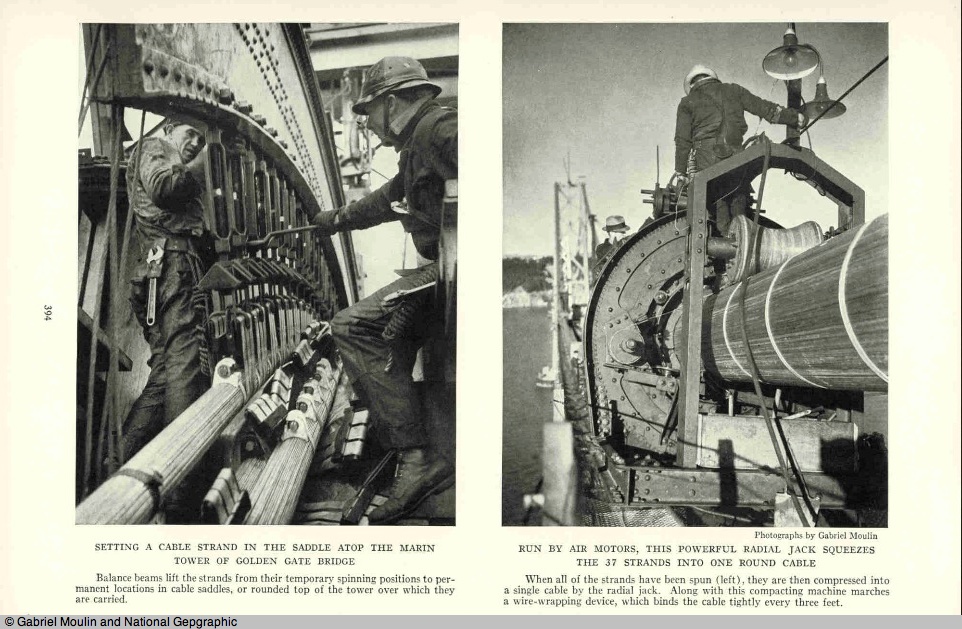
And an air shot in February 1939, shortly after completion:
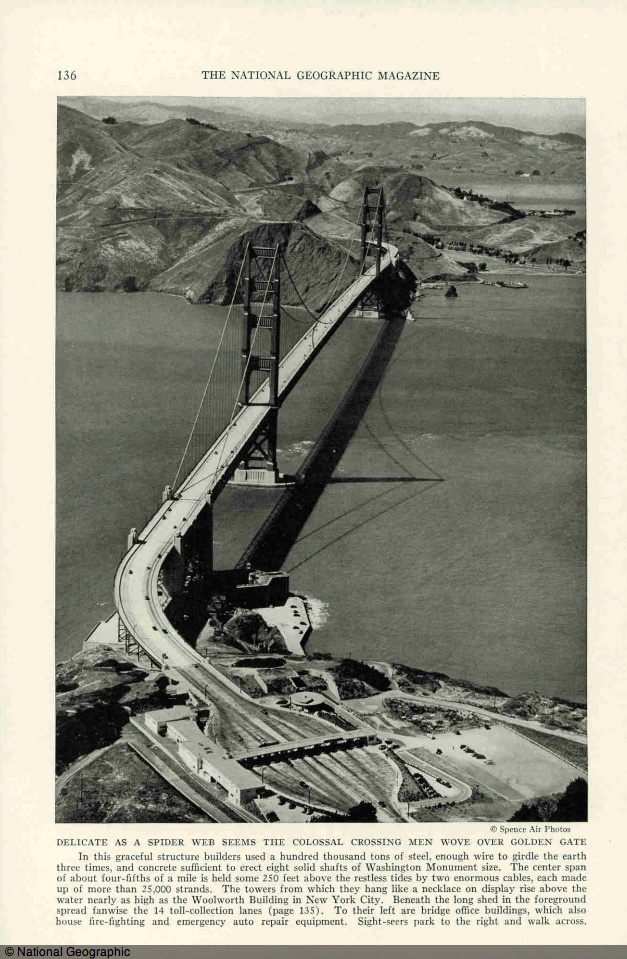
So I meandered into the city and figured out how to find a parking spot in one of the small lots on the south side, making my way up to the east footpath, the west being the one for homicidal bicyclists who, like most of the genre, seem to believe that their machines give them sole right of passage. Rather like their hero, The Man Who Was Never Finally Caught.
Mooching about on what has to have been one of the most fabulous days ever in San Francisco, windy, warm, clear as it gets, I got down to touching, smelling and tasting all aspects of the bridge with my eyes soaking up this thrilling setting like an alcoholic in a bar on St. Patrick’s Day. The footpath is remarkably vibration free despite the constant noisy traffic rattling over the expansion joints in the roadway, but grab one of the suspension cables in a clenched fist and you realize that what you are walking on is alive.
The snaps from this visit were more thinking-aloud sketches than anything else, but I’m getting a feel for the task. More challenging lighting conditions await. Here are a couple. Suffice it to say that, up close, the power and majesty of this engineering marvel are overpowering.
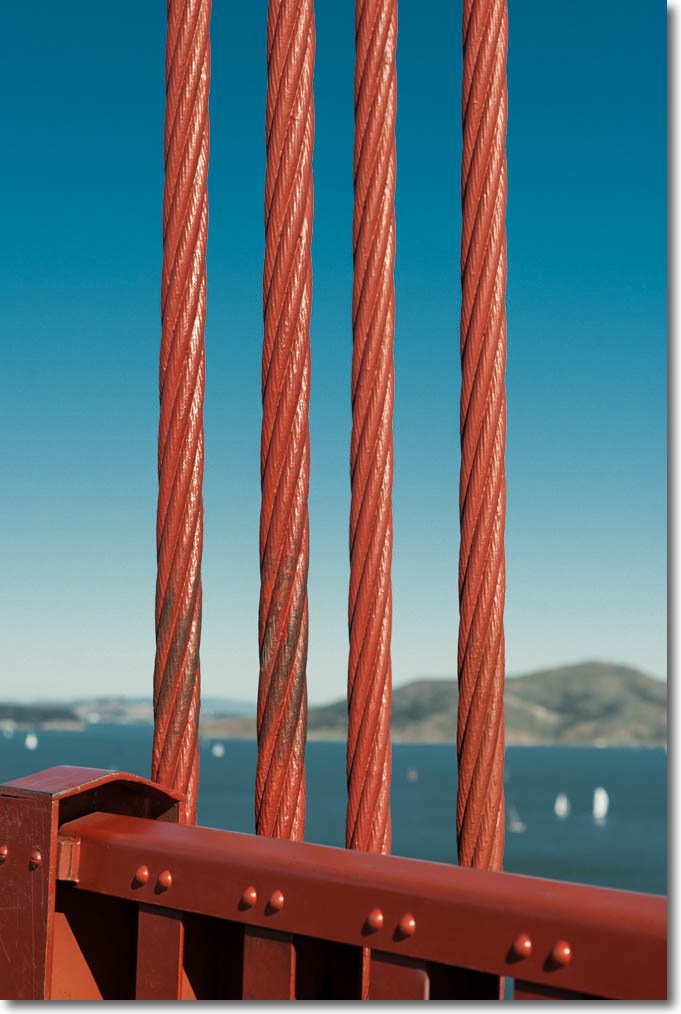
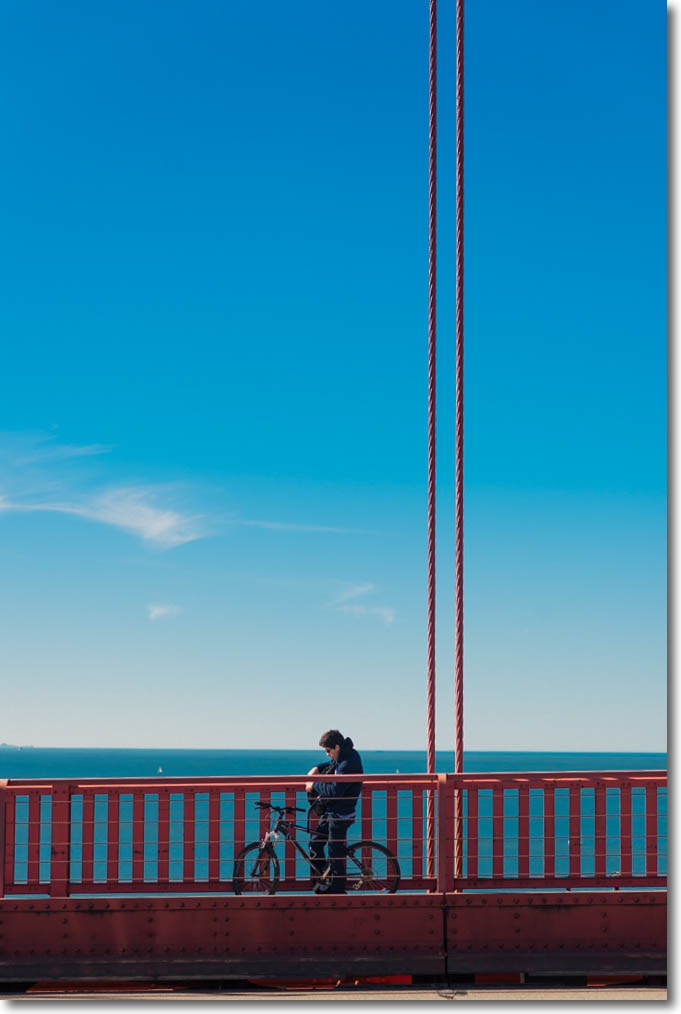
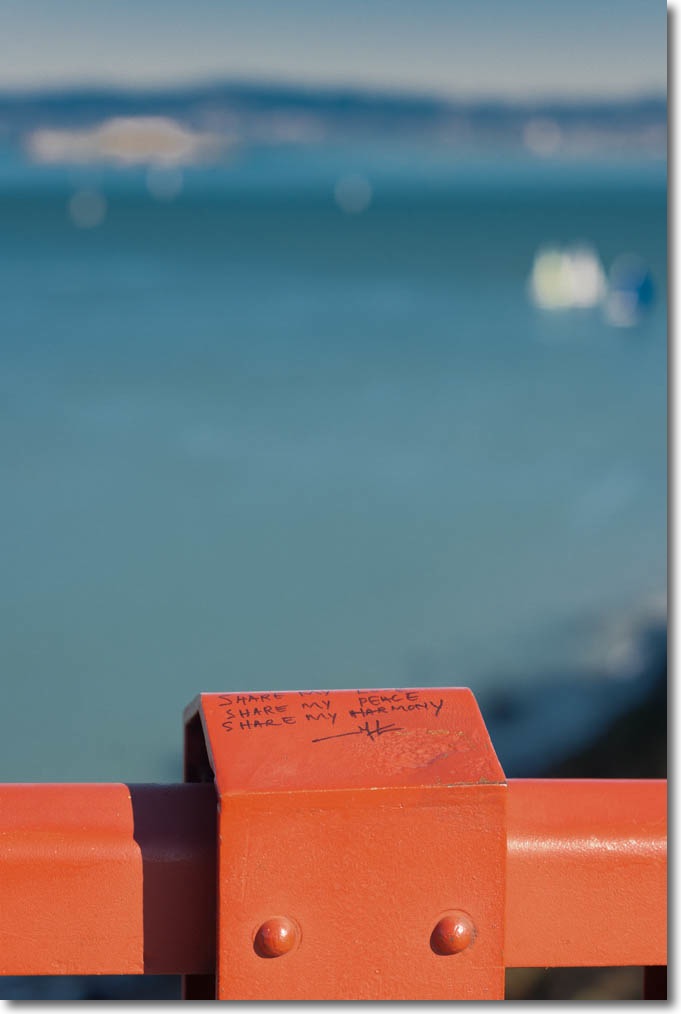
Well, it’s a start.
Nikon D3x, 16-35mm AF-S and 85mm AF-D lenses, ISO 200.
By the way, the 14 toll lanes referred to in the NG 1939 image, above, are now down to 11. Goodness knows how many times taxpayers have paid for this structure …. the 1939 toll was $0.50. Today it is $6.00.
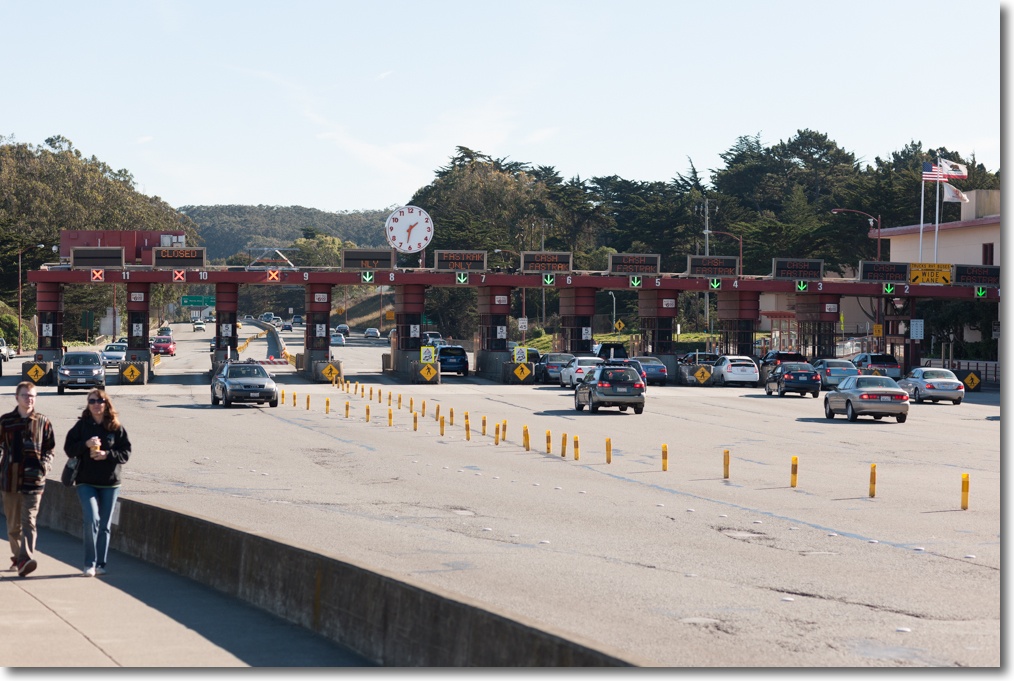
11 lanes at work today.
National Geographic’s archive remains an invaluable research tool I recommend highly, especially as they are pretty much giving it away.
Click here for Part II.